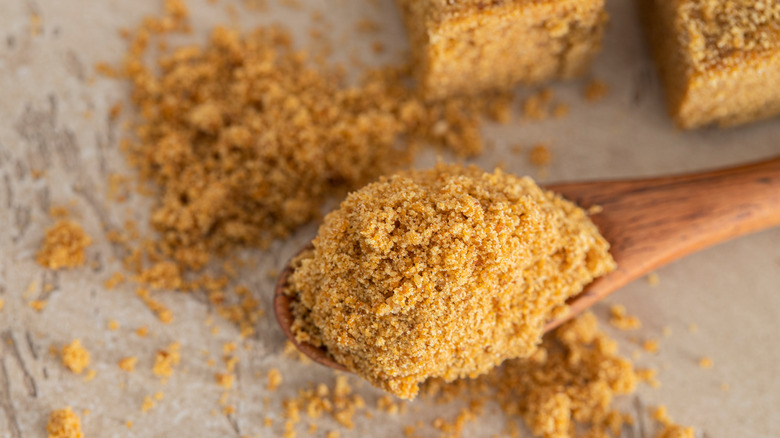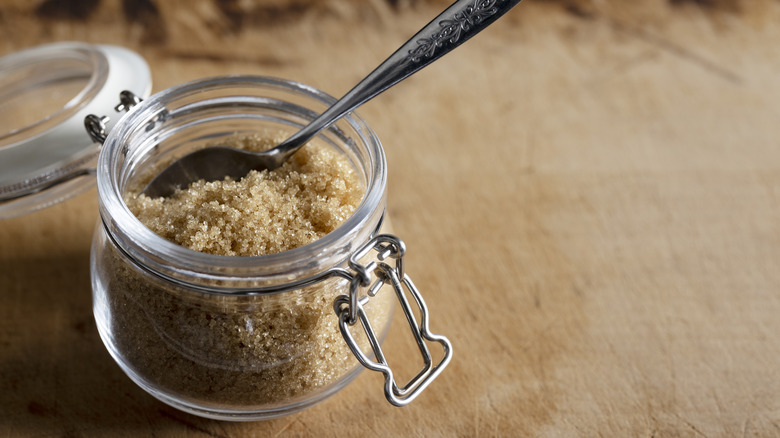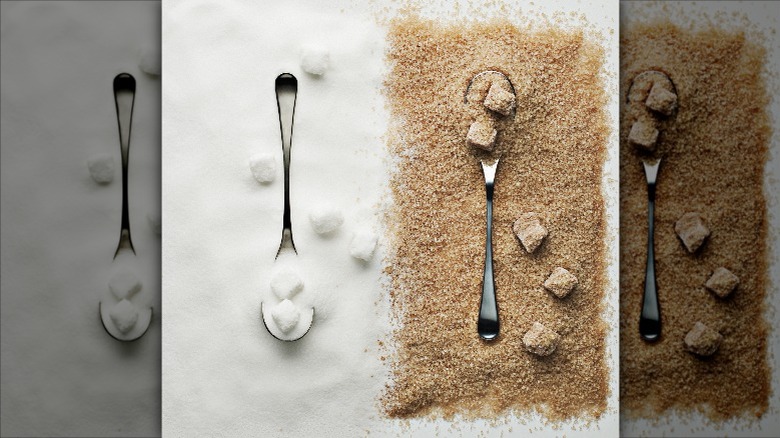How Long Can You Expect Brown Sugar To Stay Soft?
If you're looking for a new conspiracy to sink your teeth into, have you ever considered that every time you go to bake with brown sugar, it's brick hard and you need to go buy more? Could this be a ploy by Big Sugar to get you to buy more brown sugar and increase profits?
Probably not. But we've all been there: left in the box, plastic bag rolled up and maybe pinned shut, maybe not. Maybe you struggled to realign the zipper closure on the 2 pound bag and didn't notice. Either way, you turned around and in short order, you were left with a bag of building material, not a baking ingredient.
PSA: Go check your brown sugar. How long has it been that way? Take note of its consistency, and then come back and keep reading to learn how to keep it soft and fluffy for its whole useful life, so you're always ready to elevate your desserts.
How to keep your brown sugar soft
Domino claims that the shelf life of brown sugar is indefinite, but will start losing flavor after about two years. Stored correctly, it will stay soft and fluffy that whole time: airtight, cool, dark, and dry, but never in the refrigerator. Left improperly sealed, it will start drying out immediately and, depending on the humidity levels in your kitchen, take very little time to start bricking.
It's time to live out your Container Store dreams of kitchen shelves full of beautiful canisters. Or, at the very least, one airtight canister to hold your brown sugar. Is it a pain to rehome your brown sugar from the box or bag it came in to a separate container? Sure, but it's way less annoying than buying a new box of brown sugar every time you need to use it. Alternatively, if you're not a canister person, it's fine to keep your brown sugar in a zip-top bag. Preferably a reusable one.
Of course, if you're staring down a block of rock hard sugar, this will only help for next time. Luckily, there are solutions for softening your brown sugar and making it usable once again.
What to do if your brown sugar is a brick
Did you know that there is a kitchen gadget called a sugar saver? It's a piece of terra cotta that you soak in water and then place in an airtight container. Epicurious tested five common methods of restoring brown sugar — in the oven, with a wet towel in the microwave, a slice of bread, slices of apple, and the terra cotta sugar saver — and found the sugar saver to be the most effective with the least side effects (such as breadcrumbs, melting, or tasting of apple).
Terra cotta is incredibly porous, and it evaporates water at a slow, measured rate to rehydrate your sugar. If you're going to keep the sugar saver in your brown sugar after it has been reconstituted, be sure to re-soak it occasionally so it doesn't reabsorb moisture back out of your sugar.
If you don't have the hour and a half to soak your sugar saver and leave your sugar to soften, but you do have molasses and white sugar on hand, you can make your own brown sugar substitute. Light brown sugar is 3% to 4% molasses or about 1 tablespoon per cup of refined white sugar, and dark brown sugar is 6% to 10% molasses or about 2 tablespoons per cup. Give it a thorough whisking and you have homemade brown sugar (just don't forget to store any leftovers in an airtight container).


